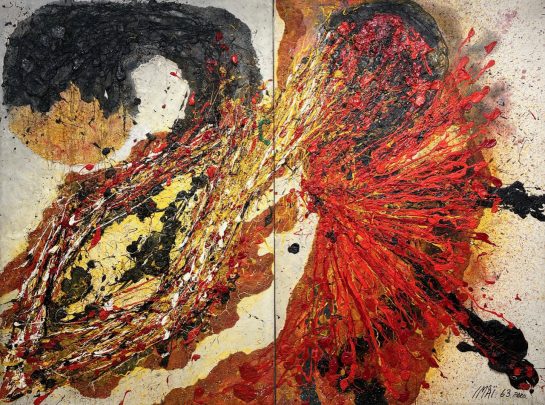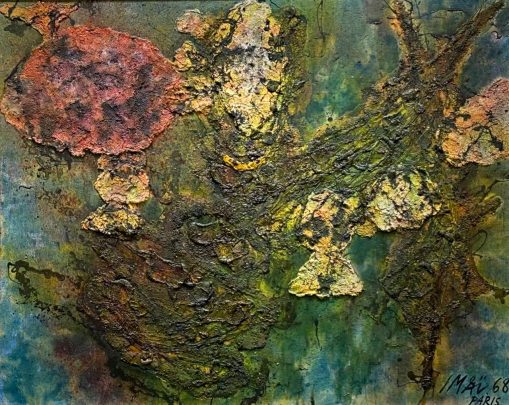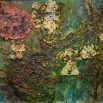今井俊満 IMAI Toshimitsu 1928–2002
- 殖 1963年 油彩・キャンバス 195x260cm ポーラ美術振興財団蔵
Eclipse / Generation 1963 oil on canvas 195x260cm collection of Pola Art Foundation - 苔と石 1968年 油彩・キャンバス 130.5x162cm
Moss and Rock 1968 oil on canvas 130.5x162cm
1928(昭和3)年京都市に生まれる。1952(昭和27)年渡仏しパリに滞在。絵具を垂らしたり振りかける技法で抽象絵画を制作するようになる。またサム・フランシスからミシェル・タピエを紹介され、アンフォルメルの美術家として認められるとともに、作品や言説の日本への紹介に大きな役割を果たす。1960(昭和35)年の第30回ヴェネツィア・ビエンナーレに日本代表として出品し、1970(昭和45)年には大阪万国博覧会で企業パビリオンの美術監督を務めるなど、国内外で活動した。1983年(昭和53)年日本の伝統絵画の技法を大胆に引用した「花鳥風月」シリーズを発表し、話題を呼ぶ。晩年は女子高生をモチーフに東京の風俗をシニカルに描いた。2002(平成14)年東京で亡くなる。
<「あの時みんな熱かった!アンフォルメルと日本の美術」展(2016年、京都国立近代美術館)図録より引用>
Toshimitsu Imai was an influential 20th-century Japanese painter. Best known for his monumental abstract works, Imai composed his canvases with a combination of thick impasto marks and fluid, inky lines to build chaotic, “allover” compositions. His striking works comprise of specifically delineated shapes, forms, and compositions, with his aesthetic often described as representative of a uniquely Japanese sensibility. The artist derived inspiration from a wide range of sources and time periods, including medieval history, philosophy, Fauvism, poetry, and song lyrics. He achieved widespread success in his lifetime, exhibiting alongside fellow leading abstract painters such as Sam Francis and Georges Mathieu. His work was notably featured at the Sao Paulo Biennial in 1953, Venice Biennale in 1960, the Japanese contemporary art exhibition in 1962, and the Centre Pompidou in Paris in 1982. Born in Kyoto, Japan on May 6, 1928, he died on March 3, 2002 at the age of 73 following a long illness.
< from artnet.com >






